To really find out if you are see strong online marketing effectiveness and are succeeding in what you’re setting out to do, you need to regularly check in with your progress to make sure your investment is performing the way you want it to.
Checking in on your campaigns requires measurements, numbers, goals, and a few simple calculations, which aren’t difficult at all. These things will give you an idea of whether your efforts should stay how they are or change to better meet their performance.
Online Marketing Effectiveness Getting Started: Goal-setting
Eye on the Prize
It’s ultimately going to be really difficult to know whether you’re being successful if you don’t know what your target is. “I want to increase sales,” or “I want to increase traffic to my website” really aren’t going to cut it as far as goals are concerned. They’re too broad.
Set realistic goals. Ones you can measure. Things more like “inspire those who click on my Google Ads to fill out a contact form.” This is a measurable goal: supply a means (the ad), cause action (user clicks on the ad), and initiate contact (submit the contact form).
And it’s critical that you build in a way for you to know how you’ve reached those goals. Meaning, in the above example, when a new lead fills out a contact form, make sure to include a way for that lead to indicate how he or she came to become a lead in the first place. That’s goal-tracking.
Once you have your goals in place, you can focus on the numbers that start to (hopefully) give you some sense of how it’s going.
By the Numbers
The easiest way to measure whether your business is doing what it should do to expand is by simply measuring increases in traffic or unique visitors. This isn’t helpful for our purposes, as simple traffic changes could be from any number of areas without any way to distinguish whether it was because of your online marketing effectiveness.
The same goes with increases in sales. They could be coming from any of your efforts, or from efforts over which you have no direct control at all, like word of mouth. Better to instead put your eggs in the basket of something more trackable and in line with the goals defined above. Track forms, calls, emails, and sales, and get details.
But there’s more to it than just pure numbers ticking upward. To get to the real success factor, you’ll need to do some calculations.
The Finish Line
When we say, “the finish line,” it’s less about the end of the campaign and more about completing a lap. You shouldn’t be measuring performance only at the end of your online marketing campaign; instead, build in regular intervals during which you can check in and assess how things are going.
This assessment can potentially save a lot of time and money. Gather the numbers and keep your goals in mind, then do the simple calculations to see where things stand. To do these calculations, you have to answer a couple of questions:
- How much have you spent on each of your campaigns since the last time you checked in?
- How many goals have you met (new calls, new customers, new emails), and where did those completions come from?
- How has your traffic changed since last time, and what the total number of unique visitors looking like?
With these questions answered, you can get some really meaningful numbers, like your conversion rate (which is a percentage, calculated via goals met divided by total visitors) or cost-per-conversion (which is a dollar amount, calculated via dollars invested divided by goals met). It bears noting that your conversion rate should be as high as possible, indicating that your campaign is successful at turning readers into leads, and that cost-per-conversion should be as low as possible, indicating that you’re spending relatively little to get a new lead.
Using those two calculations will give you an idea of whether your campaign is connecting with people (conversion rate) or if you’re spending too much to get the goals you want (cost-per-conversion). This information will allow you to adjust accordingly.
The Bottom Line
Is there sense to engaging in online marketing campaigns at all? Lots of people must think so, based on the state of ads and Facebook pages and Twitter accounts! Online marketing can be incredibly lucrative if done responsibly and if followed through in the right way. It’s not just a pet to watch grow and then let loose, but instead a delicate plant that requires nurturing to really help thrive.
The future of your online marketing efforts once you’ve started assessing your progress is entirely up to you, but at least you’ve given yourself a way to check in. There may come a time during which you’ve done your assessment and feel that you can discontinue one or more campaigns because they’re underperforming. Or maybe you’ve gotten all you need to get out of all your online marketing campaigns and can let them rest for the time being.
Either way, you’ll know where you stand in order to make adjustments, and that’s the most important thing.



